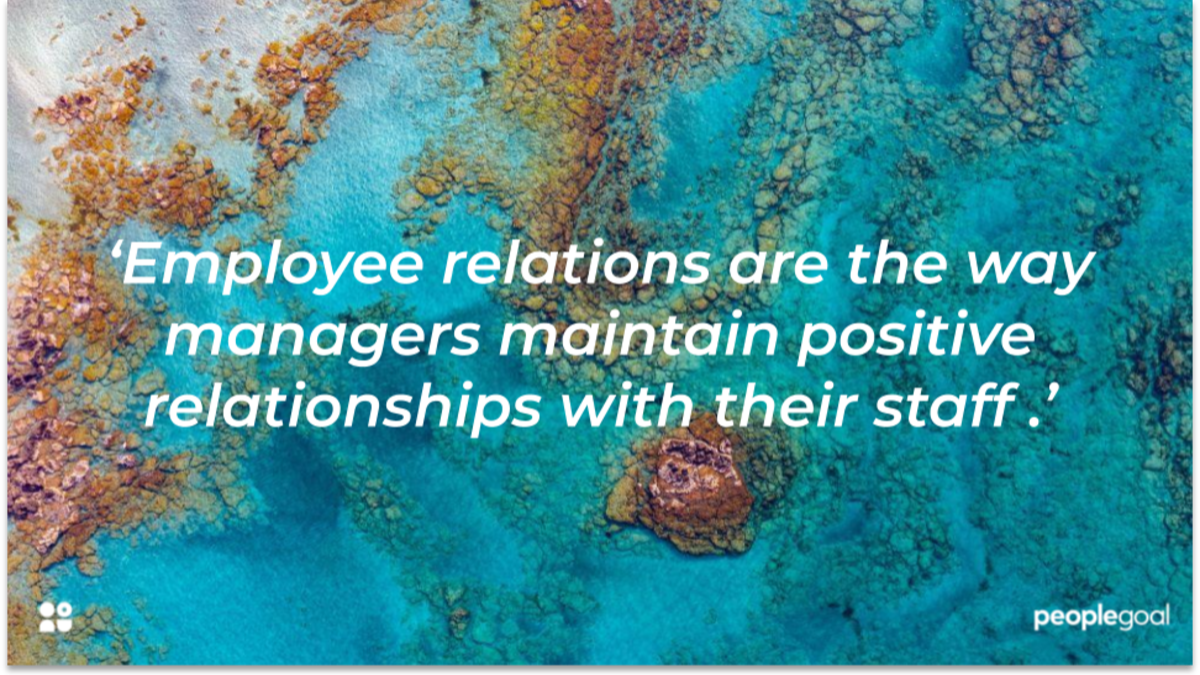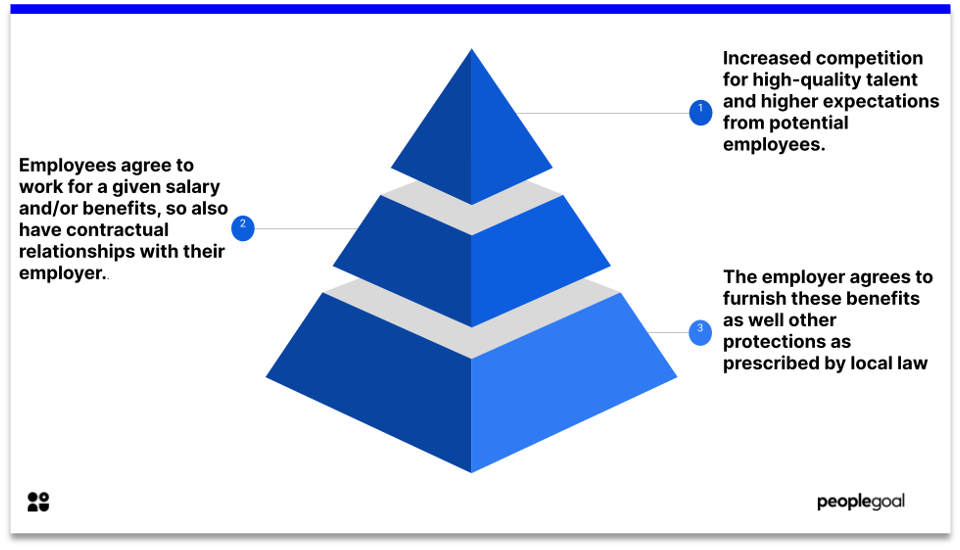Management style is the way leaders motivate their employees. A manager’s attitude, communication and personality all affect this. It’s about the working environment that a manager creates, and whether this helps a company to grow.
It’s no secret – poor managers can make work miserable. According to Gallup, managers make up 70% of the variance in employee engagement scores. The good news is management styles aren’t fixed- they can always be worked on in order to get the best out of your employees.
But with the move to remote-work, employee relations need new treatment. Management styles depend on internal factors (e.g. employee motivation, company culture) and external factors (e.g. the labor market, employment laws). ‘External factors’, in the shape of a global pandemic have required management styles to alter rapidly. What management styles can meet this moment most effectively?
Here are some of the key management styles, and our analysis of how relevant they are today.
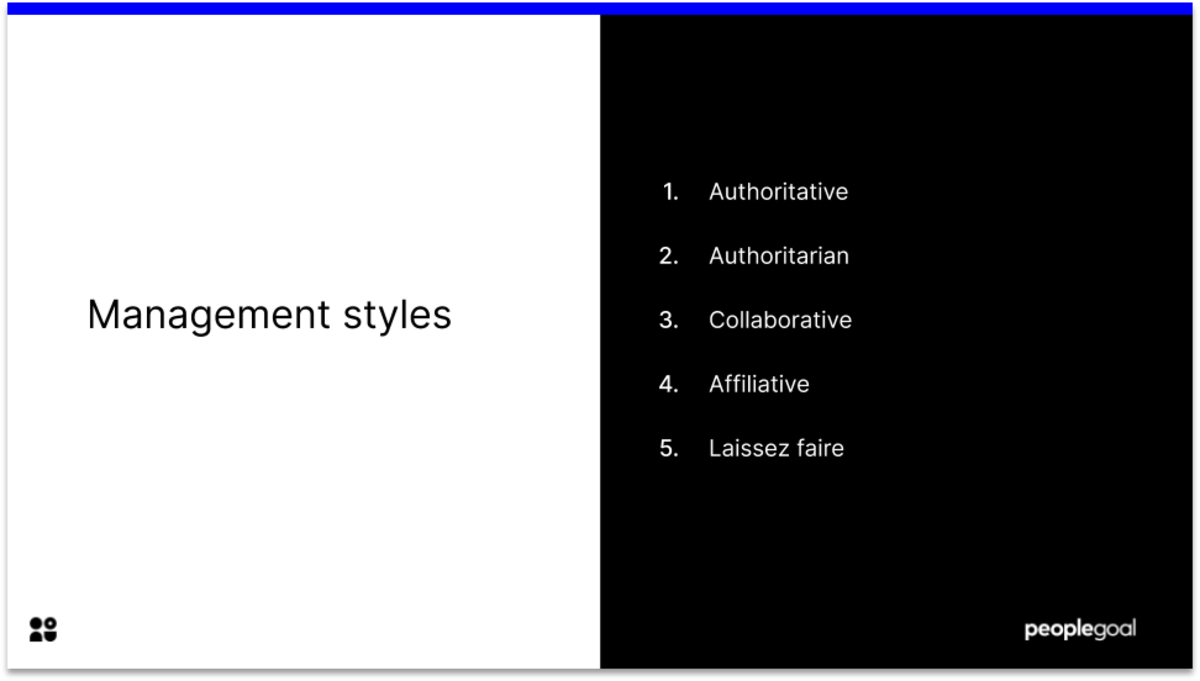
1) Authoritative management style
The authoritative management style is often mistaken for the autocratic style. Autocratic management styles work from the base assumption that employees require constant direction. Under this paternalistic system, there is a rigid hierarchical division between managers and employees.
Authoritative (or visionary) management is different. Authoritative leadership inspires teams with shared goals. Managers have clear principles that align with the company’s culture. They unite employees through a ‘shared vision’, but employees have the agency to decide how the threads fit together.
Effectiveness for remote leadership
When managing a remote team, authoritative management provides a clear direction of travel. This helps create a culture of stability amidst uncertainty.
Remember that the move to home-work was compelled by a global crisis. Pay attention to crisis psychology. When lockdowns were imposed earlier this year, managers exhibited authoritative leadership in order to affirm the direction of travel in the ‘new normal’. CERC recommends leaders use simple messaging and acknowledge uncertainty in crisis scenarios. Authoritative leaders can reassure and affirm a clear course of action. They are empathetic, and unlike authoritarians, they bear in mind the point of view of their employees.
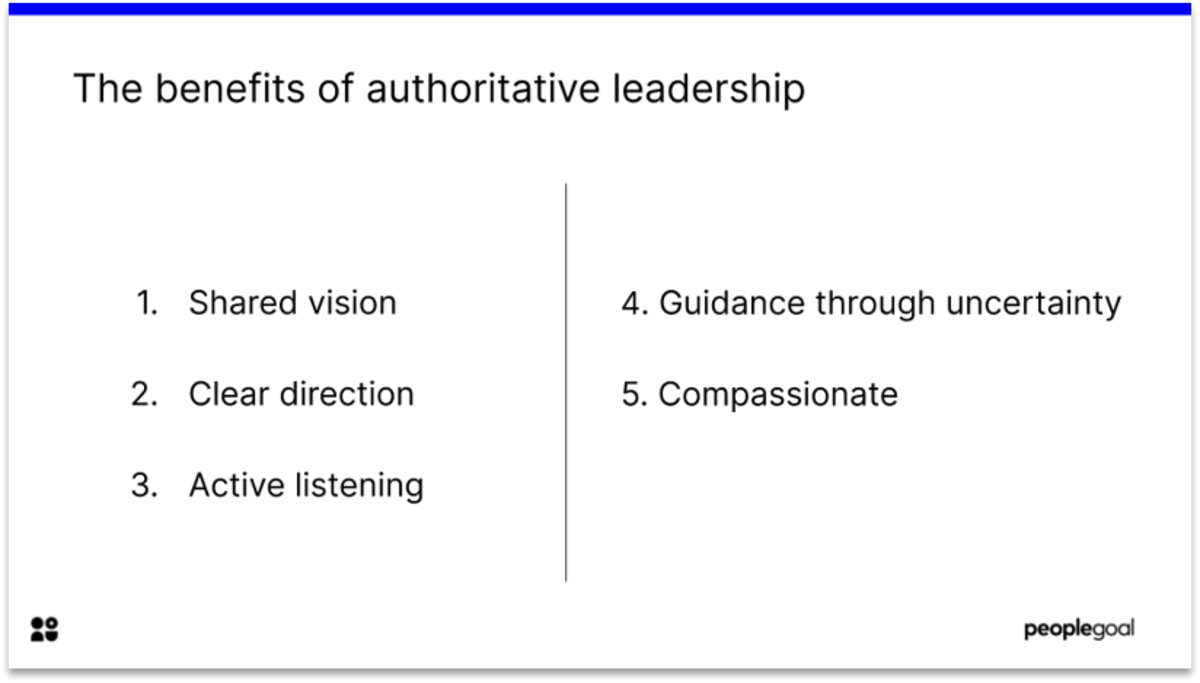
2) Collaborative management styles
Collaborative or consultative management is one of the democratic management styles. In the spirit of democracy, all employees have a voice. Rather than steamrolling their own ideas, decisions are made by majority, including employees. Jack Dorsey, CEO of Twitter Inc., said at a conference in 2017, ‘I need to recognize leaders who can succeed me.” Management is not only about self-fulfillment. Your aim should be to get the most out of your staff. Collaborative management styles can do this by giving each employee a say.
Effectiveness for remote leadership
Collaborative teams reach solutions quicker as there are more eyes on the ball. As a manager, it’s your job to build teams that can do this. The move to work-from-home means this requires some creative thinking. Fortunately, an open-door policy can go virtual. Maintain communication channels, whether through Slack or Zoom. Make sure that decision-making remains transparent – and that you give an opportunity across your team for feedback and suggestions.
We often relate the words ‘dominant’ and ‘forceful’ to leadership. The stereotype of the general observing the battlefield from a distance – privately deciding the next course of action – is outmoded. A collaborative outlook makes for a stronger manager. Remember that transparency is key, particularly as contact points are challenged by WFH.
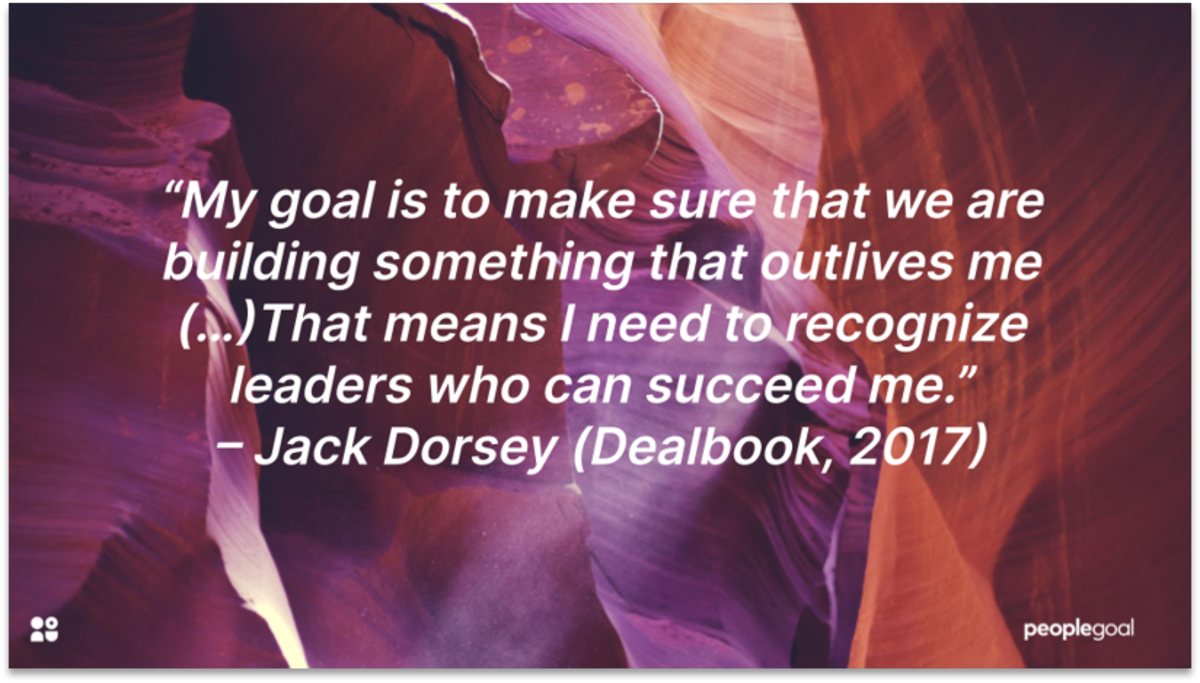
3) Affiliative management
‘Humble’, ‘understanding’, ‘supportive’. At a first glance, the affiliative management style seems more like a personality than a leadership style. In fact, any manager can adopt practices to encourage a more affiliative working environment. An affiliative manager prioritizes creating a positive outlook in their teams. It’s about balance. Conflict resolution and building collaborative teams are a priority. This allows employees to work in psychological safety – and as a result, more creatively.
Effectiveness for remote leadership
Employees face the ‘unprecedented’ challenge that is 2020. Creating this safe environment is crucial if you want them to perform to the best of their ability. Managers only have a partial view of their employees’ work-from home experience. From caring for older relatives to a lack of childcare – everyone faces invisible challenges. Balance is key here. For example, a slightly late assignment won’t have a huge impact on your bottom line, but a severe reprimand exacerbates the very stress that may be causing the delay.
Instead, an affiliative manager is flexible and trusts their employees. More empathetic communication means that you’re more likely to uncover the root causes of problems. Use the affiliative management style in conjunction with different styles. In any case, make trust, open communication and positivity the foundation of your leadership style.
4) Delegative / Laissez-faire management style
Delegative management styles encourage employees to take full responsibility for their work. Some employees enjoy the freedom remote-work gives them to complete tasks independently. Having the space to work in a home environment without interruption from management might cultivate an environment for creativity.
This offers the chance to challenge employees to reach their full potential. If an employee is brimming with ideas about a project – trust their abilities and delegate.
In 2012, LRN experimented with self-governing teams. Employee councils were elected for issues such as recruitment and conflict resolution. They encouraged employees to act according to shared values, rather than tasks set from higher up in the hierarchy. This is sometimes referred to as a bossless team. Highly skilled and motivated employees can thrive in this environment.
Effectiveness for remote-work
In living-rooms and home offices, employees are working in a more insular way than before. Independent work is the order of the day. Work-from-home may provide an opportunity for staff to take the initiative – and prove their mettle. By delegating, you share accountability for decision-making. Employees feel more directly invested in those decisions.
Such measures may not be realistic for many companies. Not every employee is motivated by the organization’s values alone. Frequent task-setting and a clear line of sight from management might be preferable. Laissez-faire management can make work incohesive. It might be more useful for a manager to act as a coach – a coaching management style provides much needed guidance through uncertainty.
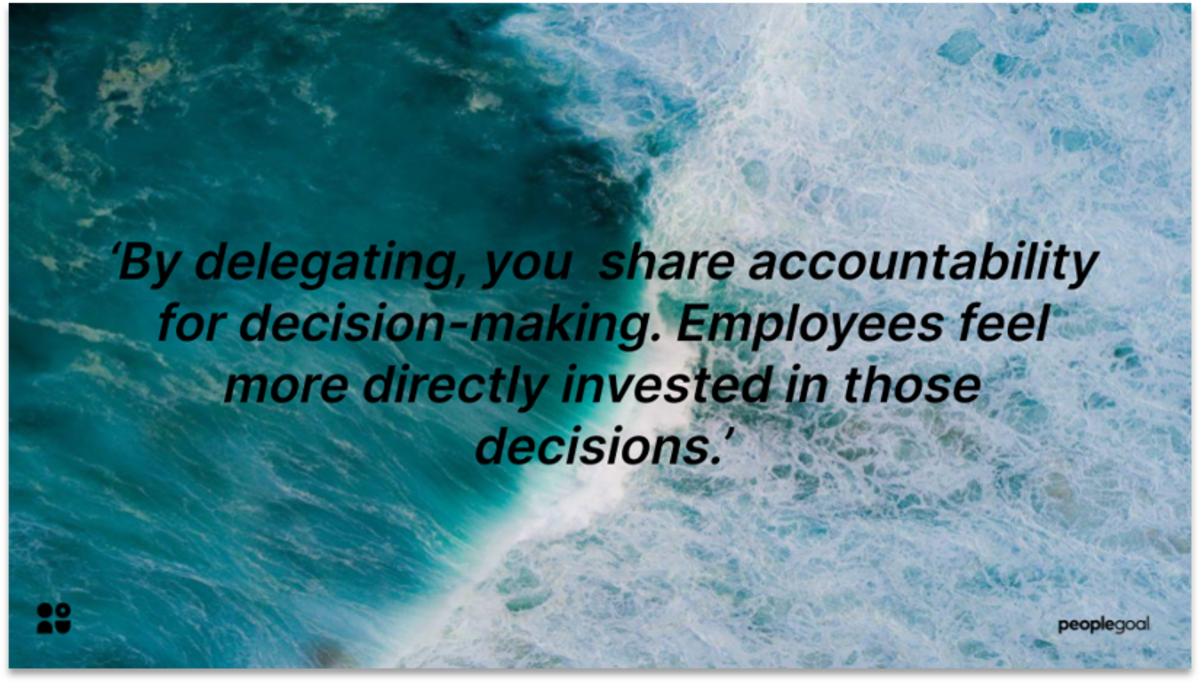
Management style is not eternal
Try not to think of the different management styles as a chocolate box selection. In reality, managers should integrate a number of these practices. Day to day, vary your use of the styles. There isn’t a one-size-fits-all. Every employee is unique and will be motivated differently. For example, introverted employees may benefit from less frequent check-ins. Extroverted employees may get a boost from more social connection. Ensure your tone, demeanor and level of communication matches these needs.
Stereotypically, we associate leadership with starry-eyed speeches and decisive action. In fact, great leadership is often about communication – how you learn about your team, and how you use that learning to inspire them to do their best. Want to learn more? Read from our collection of blog posts written for leaders.
Ready to 3x Your Teams' Performance?
Use the best performance management software to align goals, track progress, and boost employee engagement.

